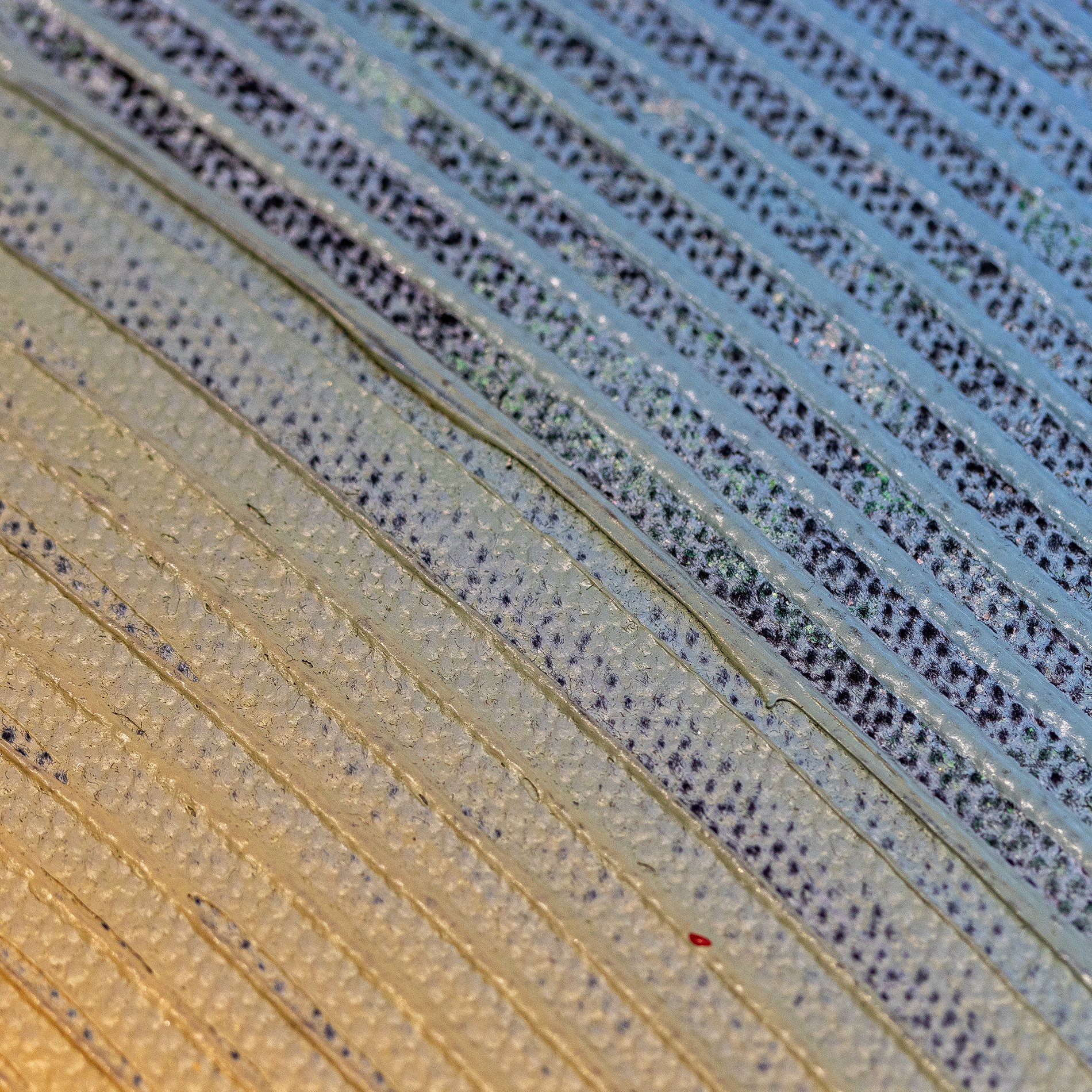
Surfaces
Romare Bearden, Adger, and Norman Lewis.
In haystacks Monet found something to illuminate his observations of the play of light and color during varying hours of the day. So too, in water—still water, running water, even frozen water—Cowans invites us to see a universe in microcosm…whatever affinities directed by our poet-photographer to immerse himself in the waters of life and are, as with all good artists, he has dealt convincingly with these mysteries of creation.
The success of these photographs need not be explained; rather they are a cause of celebration. After all, the power of art is irresistible.
Romare Bearden in an excerpt from, Cowans, Adger W., et al. Personal Vision: Photographs. Glitterati Incorporated, 2017: 133.
Bearden was commenting on the photographs by Adger W. Cowans of water, a subject of great interest to the artist. While the remarks were directed toward Adger’s work in another medium, they are relevant in that he was immensely concerned with surfaces, and addressed that in both painting and photography. The surface simultaneously provides answers and raises questions. This type of cross-medium formal exploration harkens back to the work of Bauhaus master, Lazlo Moholy-Nagy. Of course, Adger is very familiar with Moholy-Nagy’s work in photography and painting and his techniques (and concerns) parallel the Bauhaus artist’s at times.
Photo Detail: Adger Cowans, Moments for Billie, photograph

Detail from Lot 79, Untitled
Moholy-Nagy, writing about the Dynamic-Constructive Energy-System, stated,
“We must therefore replace the static principle of classical art with the dynamic principle of universal life. In practice: instead of static material-construction (relationships of material and form), we have to organize dynamic construction (vital constructivity, energy relationships), in which the material functions solely as a conveyor of energy.”
(Kostelanetz, Richard. Moholy - Nagy. Praeger Publ, 1970. )
“There is no abstract art. You must always start with something. Afterwards you can remove all traces of reality.” —Pablo Picasso
In response to Picasso,
Moholy-Nagy writes, It is time to make a counter-suggestion (Journal of Aesthetics and Art Criticism, IV, 1945).
“The intrinsic meaning of an abstract painting, as a peculiar form of visual articulation, lies mainly in the integration of the visual elements, in its freedom from the imitation of nature and the philosophy connected with it.
Color and light are the prime movers of abstract, nonobjective painting; the basis of a research which serves with its pure structural values..On another level abstract painting can be understood as an arrested, frozen phase of a kinetic light display leading back to the original emotional, sensuous meaning of color.”
He continues: “In the Renaissance, the function of color was auxiliary to the perfect illusion of objects in space. It is important to observe that these paintings had to be viewed from one certain point whence the scene would appear undistorted. We find unbearable this fixed relationship of the spectator to the painting in which his observation is permanently bound.
Pre-Renaissance painting did not try to imitate reality. It admitted that it had been painted to express moods, devotion, wonder, and ecstasy with the sensuous and emotional power of color. It emphasized less the ’story’ and more the vital performance of color to which the spectator could react directly without reasoning and conscious analysis.”
“When photography appeared, the excitement of this manually produced space and object illusion diminished; it could not stand the competition of the mechanically perfect execution of the most complicated..photographic perspectives. Contemporary painters, confronted with the static, restricted vision of a fixed perspective, countermarched to color and produced on the flat surface a new kinetic concept of spatial articulation, vision in motion.”
Detail from Lot 61, Untitled
Detail from Lot 68, Untitled
Detail from Lot 39, Masked Dream Series
Detail from Lot 54, Orbiting Sky and Earth
Detail from Lot 11, In Her Special Way

“Simultaneous grasp is creative performance—seeing, feeling and thinking in relationship and not as a series of isolate phenomena. It instantaneously integrates and transmutes single elements into a coherent whole. This is valid for physical vision as well as for the abstract.”
The painting is the subject.
For Adger Cowans, the painting is the subject. The color is the vision, and the vision is life. As Bearden points out, his work does not need to be explained, but rather experienced.
Detail from Lot 1, Orbiting Series
Detail from Lot 51, Untitled
Detail from Lot 7, Untitled

Detail from Lot 1, Orbiting Series

